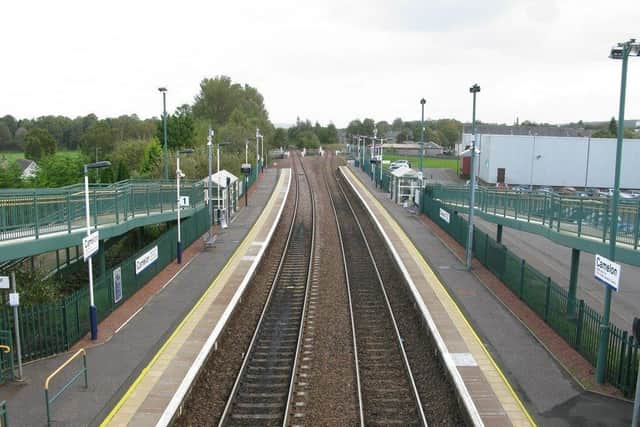Call for action as only one Falkirk district train station is fully accessible for all
and live on Freeview channel 276
Only the unstaffed Camelon station is classed as category A when it comes to access, meaning it has step-free access to and between all platforms at all times.
The other four local stations – Falkirk Grahamston, Falkirk High, Larbert and Polmont – are all category B. This category covers those stations where there is a degree of step-free access to the platform, either in one or both directions. At the local stations there is no step-free access between the platforms.
Advertisement
Hide AdAdvertisement
Hide AdNow, Richard Leonard, Labour MSP for Central Scotland, is demanding action to improve accessibility at these stations for rail passengers.


Despite the announcement that plans to close rail ticket offices in England have been scrapped, the Scottish Government is still sitting on proposals from ScotRail to close offices and cut staffing hours across Scotland. Mr Leonard said responses to the consultation highlighted the “disproportionate” impact a reduction of staffing would have on accessibility at train stations.
Mr Leonard, who is the convenor of the RMT parliamentary group of MSPs in Holyrood, said: “It is simply shameful that we are going into 2024 with disabled people still being locked out of train stations. Public transport should be fully available and accessible to all members of the public. This direct discrimination must be fixed immediately, alongside confirmation that plans to axe ticket office staffing will be scrapped.”
Figures highlighted by Scottish Labour show that almost two thirds of train stations in Scotland are not fully accessible for disabled people. Just 138 of Scotland’s 362 stations are fully accessible. According to the figures half are partially accessible, while around one in eight stations do not have step-free access to any platform at all.
Advertisement
Hide AdAdvertisement
Hide AdPhil Campbell, ScotRail customer operations director, said: “ScotRail is committed to making sure that all rail users have equal access. We enable tens of thousands of assisted travel journeys each year, and many more spur of the moment trips. Our ‘Accessible Travel Service’ provides free assistance to people who need a little extra help, whether it has been booked in advance or not.
“We’re committed to building on the success of this service, which includes listening to and acting on feedback from our customers, and we’ll continue to work with our stakeholders at all levels to ensure that everyone can travel on Scotland’s Railway with confidence.”
ScotRail operates the Passenger Assist System that can be used by disabled people who require extra help when getting on or off trains.
Disabled people are able to book assistance at least one hour in advance for journeys on the ScotRail network. If they don’t have time to book in advance they can request assistance from on-train or station staff. At unstaffed stations they can speak to a member of staff via the station Help Point on the platform.
Advertisement
Hide AdAdvertisement
Hide AdA Network Rail Scotland spokesperson said: “Many of our stations date from the Victorian period and were not designed with the needs of all travellers in mind.
“Accessibility improvements across Britain are funded by the Department for Transport and delivered in Scotland by ourselves and Transport Scotland.
“We work closely with both governments, local authorities and our train operators to review accessibility at our stations and upgrade as many as possible for our customers.”